Edward Kienholz – The Beanery: A story about time
"The Beanery" is a time capsule that tells you that the time is subjective... while rapidly decaying.
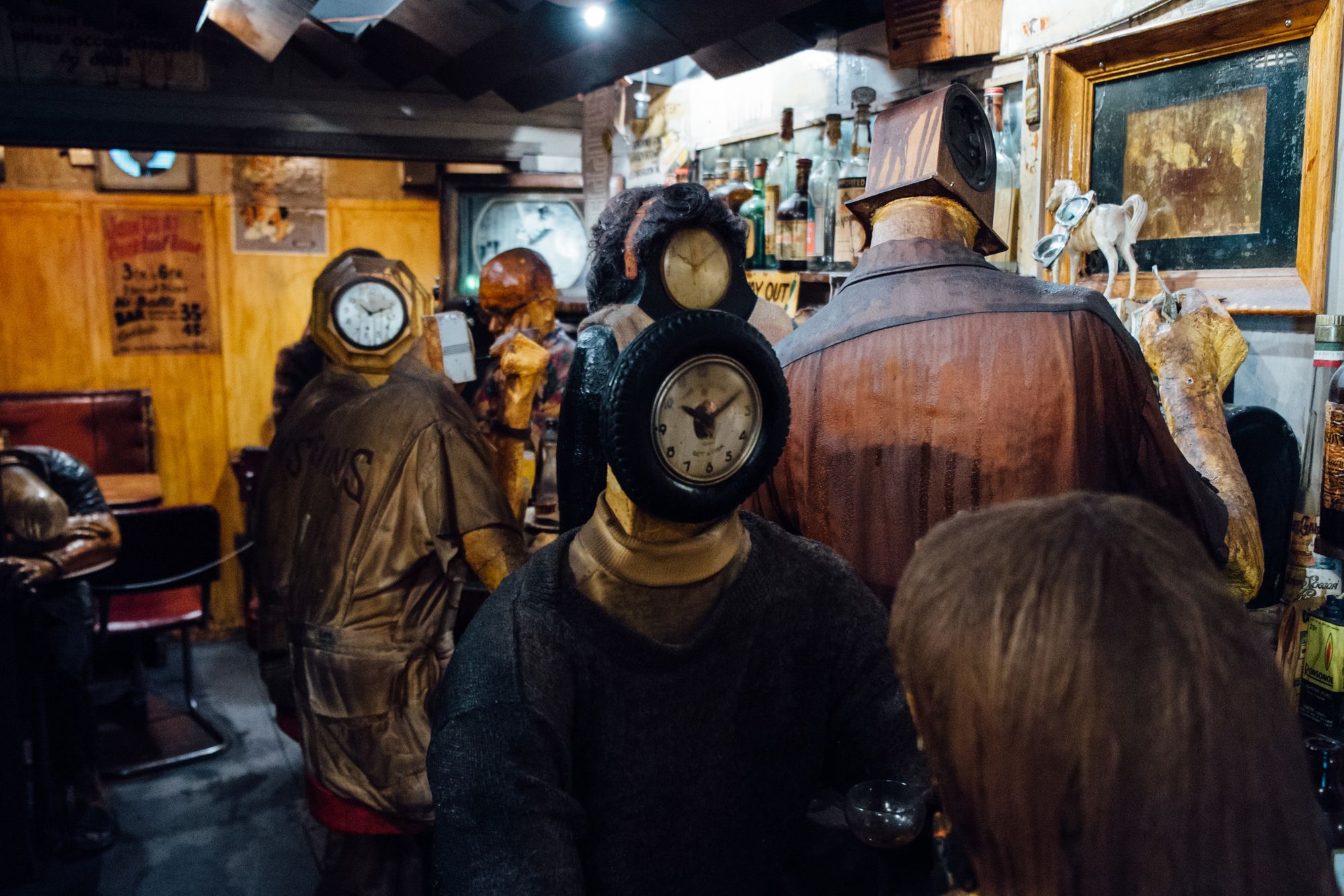
Imagine going to a bar. As you're passing a newspaper rack, you catch a glimpse of a title about an impending war. Inside, however, everything seems to be in order. The smell is familiar, the noise is familiar, but glancing at guests, you notice something peculiar: they have clocks instead of heads!
"The Beanery" by Edward Kienholz is my favorite piece of art. You can find it in the Stedelijk Museum in Amsterdam.
I was lucky to see it when I visited Amsterdam for the first time, in the fall of 2013. A visit to the Stedelijk was also my first visit to a “proper” contemporary art museum, so it was quite intense overall. This installation, however, struck me the most.
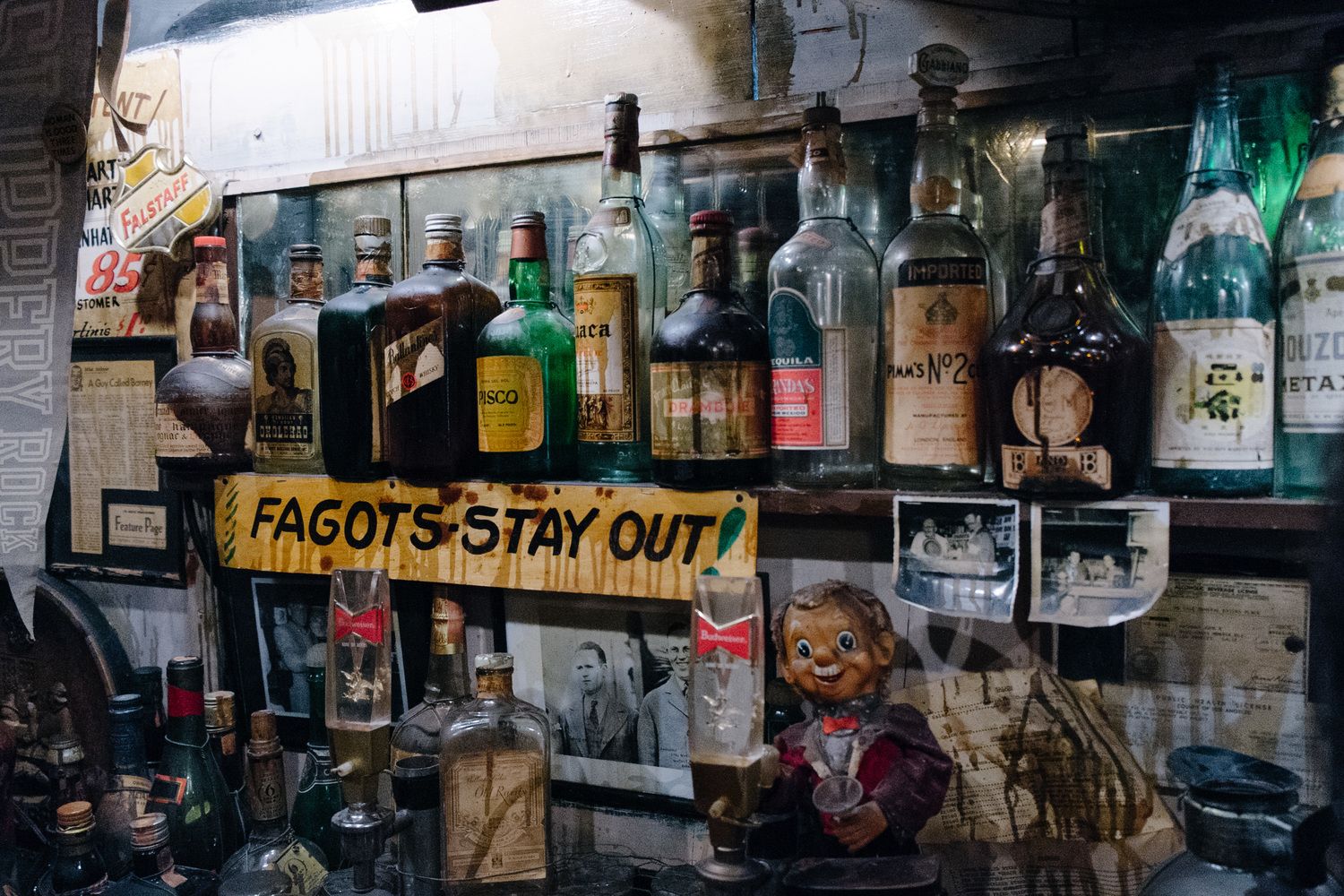
Edward Kienholz was an American sculptor and installation artist. Although not professionally trained, in his early life he practiced various crafts (e.g. carpentry) which later helped him create his distinctive style. His works are often associated with the Beat movement, but some authors find it similar to the European version of pop art.
His installations are grim, often composed of things he would find in junkyards or at flea markets. Incorporating traces (and trash) of consumerism, his works were mainly a critique of society.
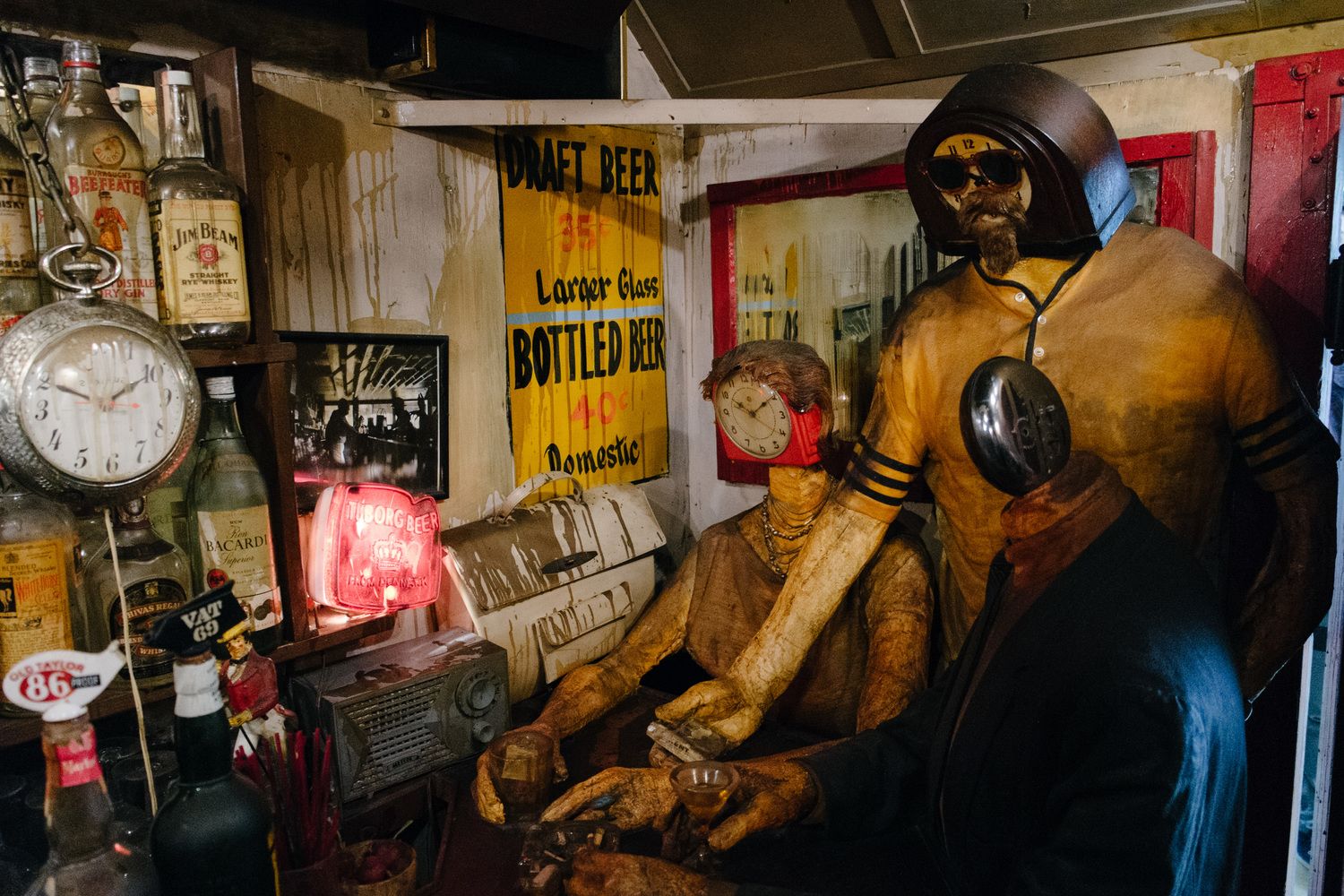
"The Beanery" is a reconstruction of a real pub. The piece was made in 1965. It's a walk-in installation and although it's three times smaller than the real pub at that time, its interior is an exact replica of the original.
The piece is about time – objective and subjective time, losing, killing, and wasting time. Next to the entrance to "The Beanery", a visitor is greeted by a copy of "Herald Examiner" from 1964 and the title on its front page reading "Children Kill Children in Viet Nam Riots".
The guests are caught in different stages of private interactions. The sound you hear inside is the original sound of “The Beanery” (the recording was made by Kienholz himself and is now digitalized). It even has the smell of the real pub. The mixture of scents is regularly made according to the artist’s recipe.
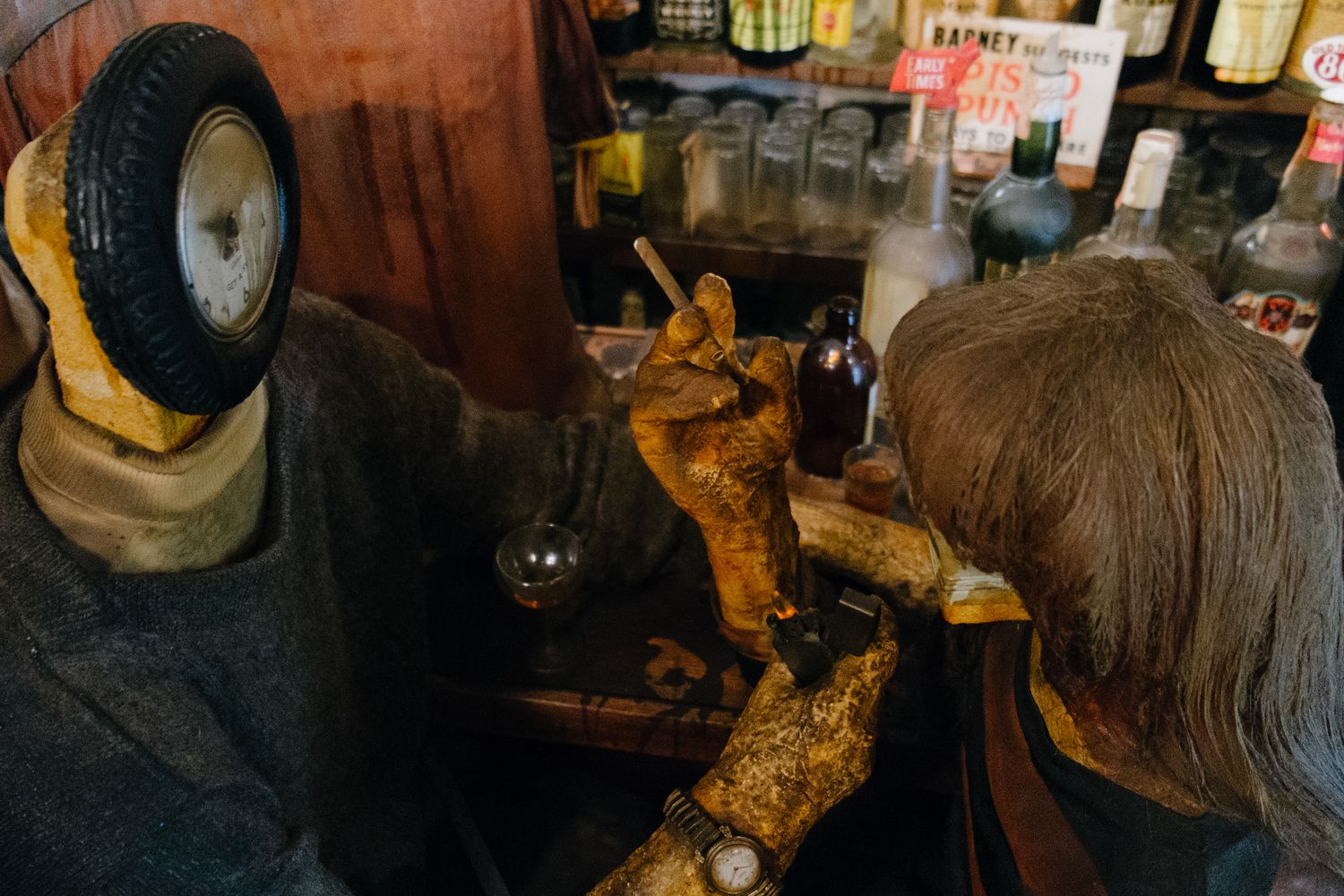
People’s heads are clocks, always reading 10:10. While the time outdoors is getting turbulent, the time in the pub is subjective and standing still. And is not standing at all, respectively.
Kienholz painted his installations with a kind of synthetic resin that he mixed himself. That resin is slowly eating through “The Beanery” and making it degrade and decay. Some materials have already deteriorated, way faster than they would normally do.
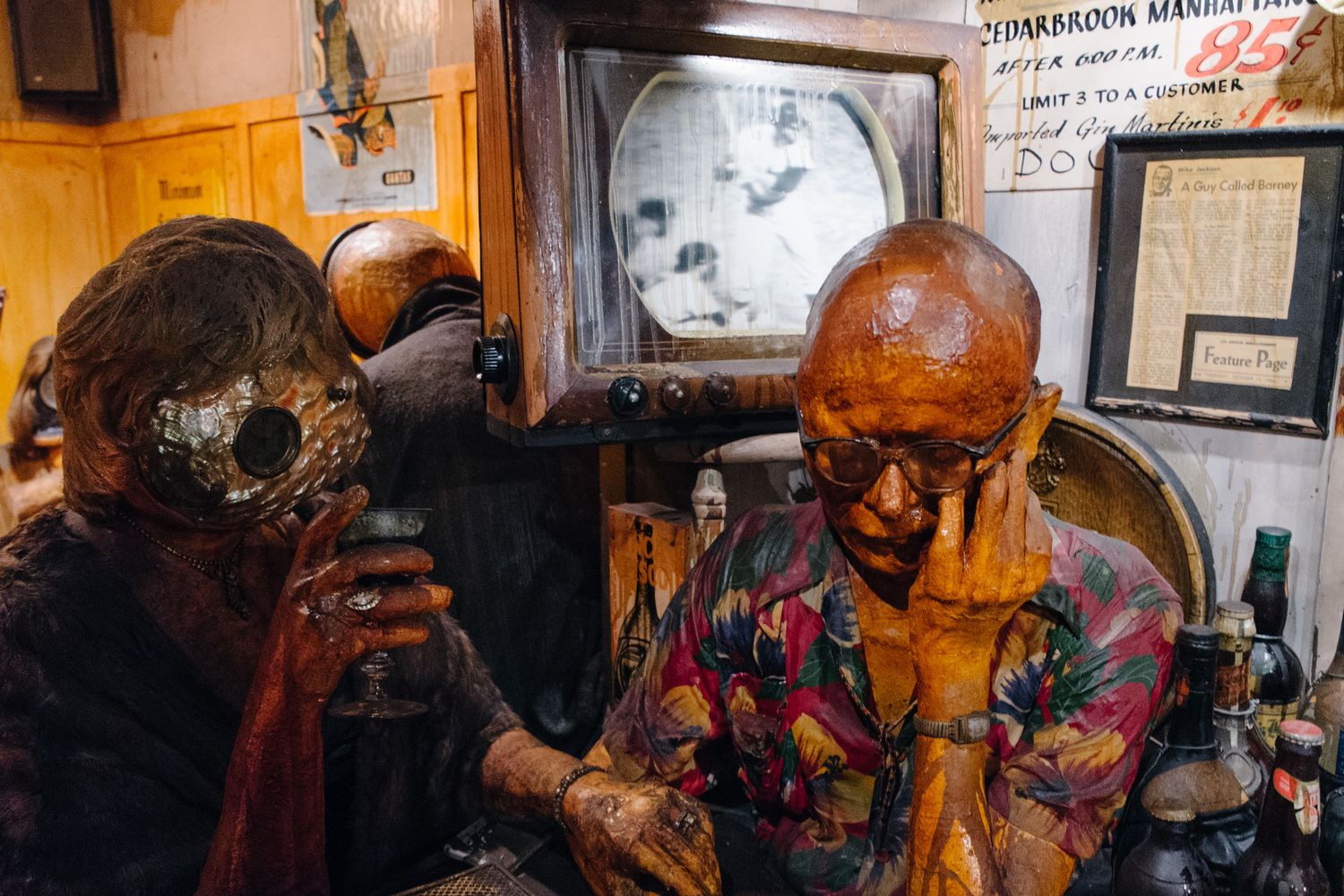
If you know me, you probably know that I'm terrified of dying, decay, and the passage of time. Actually, I haven't met a person who isn't, to some extent. "The Beanery" is a time capsule that tells you that the time is subjective... while it's rapidly decaying itself.
Due to the fragility of the installation, only one person is allowed in at the time. Its decay is giving me an urgency to go and see it as many times as I can until it gets too worn out to be displayed. By visiting this Kienholz piece, I want to absorb as much of it as I can until it decays completely. By doing so, no matter how careful I am, I'm inadvertently aiding its decay and speeding it up.
And I don't think the artist would have wanted it any other way.